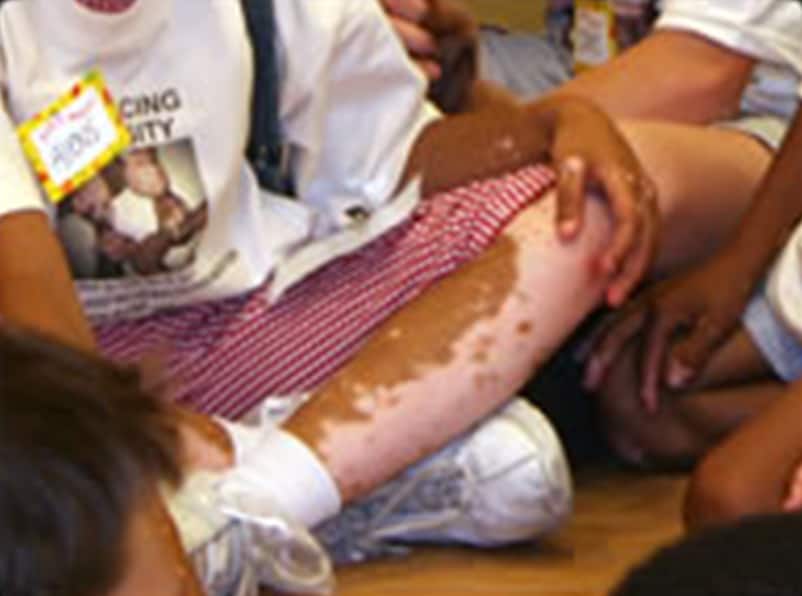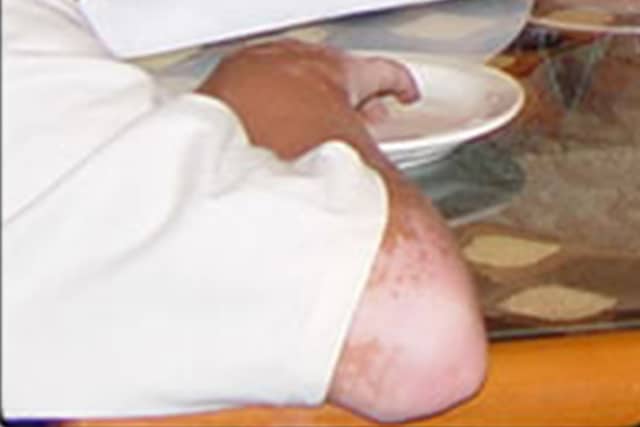What is Vitiligo?
Vitiligo is a condition in which your skin loses melanin, the pigment that determines the color of your skin, hair and eyes. If the cells that produce melanin die or no longer form melanin, slowly growing white patches of irregular shapes appear on your skin.
Vitiligo usually starts as small areas of pigment loss that spread and become larger with time. These changes in your skin can result in stress and worries about your appearance.
There is no cure for vitiligo. The goal of treatment is to stop or slow the progression of depigmentation and, if you desire, attempt to return some color to your skin.

Vitiligo: (vit·i·li·go) Vitiligo is a skin condition of white patches resulting from loss of pigment. Any part of the body may be affected. Melanin, the pigment that determines color of skin, hair, and eyes, is produced in cells called melanocytes. If these cells die or cannot form melanin, the skin becomes lighter or completely white. Affected skin is particularly sensitive to sunlight.
Cause of Vitiligo
Your skin is composed of three layers – the epidermis, the dermis and the subcutaneous tissue. The outermost layer of your skin is the epidermis. Melanin, the pigment that determines the color of your skin, hair and eyes, is produced in the epidermis. Melanin provides the coloring of your skin and helps protect it from damage from ultraviolet light.


People of all races are born with approximately the same number of pigment cells (melanocytes). The rate at which melanin granules are formed in these cells and their concentration in the epidermis are inherited characteristics and major factors in skin color differences. When no melanin is produced, the involved patch of skin becomes white. When a white patch grows or spreads, the cause may be vitiligo.
The exact cause of vitiligo isn’t known. Doctors and scientists have theories about what causes the disorder. It may be due to an immune system disorder. Heredity may be a factor because there’s an increased incidence of vitiligo in some families. Some people have reported a single event, such as sunburn or emotional distress, to trigger the condition. However, none of these theories has been proven to be a definite cause of vitiligo.


